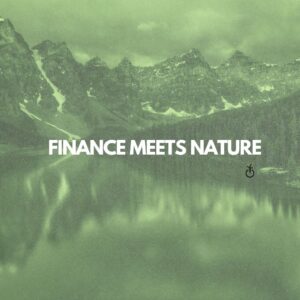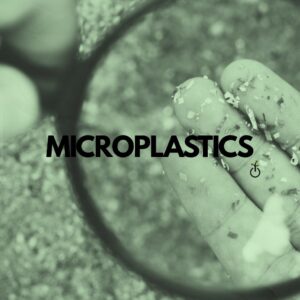There are a plethora of economies around the world that use renewable resources to advance their tourism and make your trips and expeditions whether in the mountains, by the beach or in the huff and puff of urban cities even more enjoyable. This article will explore how to tackle eco-tourism, including a list of countries and companies to look out for when planning your next trip!
Before we start, it’s good to provide our readers with a definition of ecotourism. Ecotourism is a term used to describe travel to areas where active steps are taken to conserve and protect the environment and improve the economic and social well-being of local people.
Figuring out where to go to truly stick to sustainable destinations and activities and not falling for greenwashing traps can be a tricky quest. Three options to go about this challenge exist: researching a destination’s adherence to the principles of eco-tourism, relying on eco-labels and searching for destinations and activities embedded in an environment of sustainability.
The first option at your hands is to make yourself familiar with the general principles of ecotourism and do your own research on planned destinations to find out if they adhere to all of them. No single definition on the key principles of eco-tourism exists. Most sources, however, agree on the following three points which must be fulfilled for a destination or activity to count as ecotourism:
1. Minimal environmental impact: Activities and destinations promote only limited interaction with the local environment and species and make sure that visitors leave no traces behind. Providers can further redirect some of their income to sustainable projects such as conservation efforts to protect endangered species. Finally, sustainable resource use (e.g., minimize waste, renewable energy) should be promoted.
2. Involve local communities: Local communities should actively be involved in the development of sustainable tourism practices. It is essential that the communities not only benefit economically, but that they also retain control over the scale and nature of tourism practices experienced on their land. This includes activities being respectful to the local cultural practices.
3. Awareness: The providers of ecotourism activities should actively raise awareness for natural conditions of the local environment. This facilitates a transformative learning experience that melds enjoyment with enlightenment, leaving visitors with lasting, meaningful impressions.
Doing your own research is definitely the most time-consuming approach but will also render the most thorough and reliable result, as you can consult a variety of sources and reviews to make up your own mind.
Another way to pick your next sustainable travel destination is to rely on ecolabels. Ecolabels are certifications given to destinations, activity providers and venues hosting tourism which adhere to certain sustainable standards. They are designed to inform consumers in a quick and efficient way on the environmental or social impact of an organization. Choosing a destination based on ecolabels is a very time-efficient approach but bears flaws to keep in mind: No global standard for eco-tourism labels exists. Hence, eco-labels often simply convey voluntary and self-proclaimed sustainability commitments without having proof of compliance. This makes it difficult to distinguish real responsibility from greenwashing. An important benchmark to look out for is whether the destination or the activity has been certified by the Global Sustainable Tourism Council (GSTC), or if eco-labels are officially recognized by the GSTC. Currently, about 50 labels are officially recognized by the GSTC; a continually updated list can be retained through the council’s website.
Finally, you can look out for destinations and activities which are embedded in a larger environment focused on sustainable practices. This can happen through one of two, often interconnected channels: On the one hand, you can choose a destination located in a country or region which is generally known for stringent sustainable regulations or practices. Find a list of such countries in the second part of this blog post below! On the other hand, you can rely on companies which follow strict sustainability guidelines. Since (large) companies need to answer to a broad array of stakeholders, including investors and local regulators, the information conveyed on the sustainability of their practices needs to be more accurate. The final section of this blogpost proposes a few companies to look out for.
Countries
Iceland
Iceland provided multiple ‘green’ features that interested me and others. A notable feature of the country is its geothermal energy that produces 25% of the country’s total electricity. This natural form of heat energy is derived from the volcanoes which populate the country. Iceland also uses many hydroelectric sources of energy, which represent around 75% of the total energy production.
Despite these advances into sustainable energy, Iceland does have its flaws. The PM (particulate matter) from volcanic eruptions does play a role in overall greenhouse gas emissions from the country. In times with more eruptions, the levels of emissions actually exceed the EU limit values. Hydrogen sulfide from geothermal power plants also has been a factor towards pollution in the country as well.
Iceland however has been increasing efforts in recent years to minimize the pollution and carbon emissions of the country. From new laws referencing permits for industrial activity, and also limits on emissions, pollution and other factors. Operating licenses are needed for any power intensive and large scale industries in which that could cause pollution in any form. I
believe that Iceland is a world leader in sustainable living, with the country overall living sustainably and efficiently.
Switzerland
A great fact about Switzerland is that it is a global leader in sustainability, and it cites both air and water quality as being best in the world.
How Green is the Swiss Travel System? One of the factors that lead to the Swiss being a global leader in sustainability is how they managed to reduce the carbon footprint in the Swiss Travel System. Switzerland has the world’s most effective public transportation system which is -a fully integrated air, train, and bus system- powered majorly by clean hydroelectric power sources. The country is an active advocate of public transport for citizens as well as tourists not only because it is fast and reliable but also to minimize the negative impact in Alpine areas. Hydroelectric power is clean as; no fuel is burned so there is minimal pollution, water to run the power plant is provided free by nature and it is renewable due to rain falling renewing the water in the reservoir.
However new research finds that hydroelectric power may not be as clean as we all think. In some cases, having hydroelectric power can have negative impacts on water quality, destroy fish habitats and it can cause flooding of land and wildlife habitats. More funds and research are thus needed to make the landmarks in this country and its transportation more sustainable and effective, nevertheless, it is on the right path.
Croatia
Covering an area of 296.8km2, Plitvice Lakes National Park is in possession of a rich natural heritage in flora, in fauna, and significantly important, in tufa, which process of formation results in building travertine barriers creating the lakes and represents the outstanding universal value for which the Plitvice Lakes were internationally recognized on the UNESCO World Heritage List. Located between the 2 of Croatia’s mountain ranges Lička Plješivica to the southeast and Mala Kapela in the west and northwest, the national park consists of 6 forests, numerous grasslands and heathlands, 16 cascading lakes and more than 90 waterfalls protecting various, abundant, locally and globally endangered species and offering adventurous activities such as hiking, rowing, cycling, and skiing. Last but not least, it was beautiful to see the water color in the lakes range from a bright emerald green to aquamarine, turquoise and blue depending on the amount of minerals or organisms present, the angle of the sun and most importantly, the calcium carbonate from the limestone rocks. Considering the fact that the location of the national park was ravaged during the civil war in 1991, it is amazing how in only 4 years after the Serbs took over the park’s headquarters preventing any tourism, the flora and fauna recovered into the Plitvice Lakes National Park that we know today.
Jane Goodal once said “How is it possible that the most intellectual creature to ever walk the planet earth is destroying its only home?” and unfortunately, starting in 2017, the Plitvice Lakes National Park provided an answer to this question, at least for its own case: through tourism,
pollution, traffic, and constructions. The national park was facing a constant and rapid increase in the number of its visitors moving from 927,661 visitors in 2007, to 1,771,523 visitors in 2019 reaching its peak leaving significant negative consequences on the flora and fauna of the national park and being a threat to the growth and development of the tufa barriers which labels the unique lakes as “endangered”. Changes in water regime are usually the main menace to the tufa barriers which causes the barriers to dry out and prevents their growth. Such water regime changes are a product of pollution of the lakes’ water caused by the houses and holiday apartments in the outskirts of Plitvice Lakes National Park lacking proper solutions for their waste-water management. Most importantly, the seriousness of the ecological well-being of the Plitvice Lakes National Park has emerged to the point of it being threatened to be removed from the UNESCO World Heritage List. Nevertheless, Croatia has immense potential and a thriving economy and opportunities to develop its tourism sector.
This concludes the first part of the guide, however, there are many more places in the world to explore and ways to brainstorm to make the world a better place, which can be done through individual reserach.
Companies
Traveling the world can be a great way to expand your worldview and experience different cultures. But unfortunately, travel is often not an eco-friendly activity, and researching sustainable travel options is time-consuming.
For this reason, in this second segment, we will present you with some examples of virtuous travel companies that can assist you in identifying the most environmentally-conscious transportation, accommodations, and experiences.
Byway
In its ambitious mission statement, UK travel platform Byway declares that its goal is to make flight-free holidays a mainstream holiday choice. How do they plan to do so? By helping people discover the beauty of slow, overland travel across Europe, Morocco and Turkey.
Founder and CEO, Cat Jones, launched the now B Corporation-certified company in 2020 during the first Covid lockdown, determined to find a way to reduce flight emissions. Their motto is “traveling through the world is better than flying over it”, and avoiding flights drastically reduces the carbon footprint of traveling.
Their goals are not limited to reducing the environmental impact of travel by promoting flight-free holidays. They aim to stimulate local economies and facilitate environmental recovery by redirecting tourists from overcrowded destinations to the often overlooked but fantastic places in between.
In the end they aspire to increase the proportion of tourist expenditure on sustainable products and services by prioritizing partnerships with environmentally friendly businesses.
Furthermore, Byway is one of the founding signatories of the Glasgow Declaration on Climate Action in Tourism, which commits signatories to halving their emissions by 2030 and reaching net zero by 2050.
Natural Habitat Adventures
Natural Habitat Adventures’ mission is conservation towards exploration. They offer exciting and sustainable small groups itineraries to the planet’s most extraordinary wildlife, landscapes and cultures. Nat Hab’s travelers have the opportunity to go on safaris in Africa, explore the wildlife in the Galapagos, visit national parks, and even venture to Antarctica!
Since its founding in 1985, Nat Hab’s product is conservation travel: life-transforming forays into the natural world that benefit wild habitats and the animals and people who live there. “We know travel has the power to protect nature, benefit communities and preserve cultural heritage principles we view not only as our goal, but our responsibility”.
Nat Hab has been a WWF’s conservation partner since 2003 and supports a wide variety of philanthropic initiatives in its destinations.
They have been carbon-neutral since 2007, mitigating their carbon dioxide output through offsets. Since 2022, Nat Hab has supported Tomorrow’s Air, a carbon removal collective funding innovative negative-emissions technologies while also promoting climate-conscious travel through education and storytelling.
In 2019, Nat Hab operated the World’s First Zero Waste Adventure. They are proud supporters of Travelers Against Plastic (TAP), a campaign to spread awareness about the impacts of using disposable plastic water bottles while traveling.
Gondwana Ecotours
Another remarkable sustainable company is Gondwana Ecotours, whose mission is “to bring people from different continents closer together, one trip at a time.” This New Orleans-based company specializes in small group and private tours around the globe, such as gorilla trekking in Rwanda and glaciers and grizzlies adventure.
A key component for Gondwana Ecotours is its network of guides who live in the communities visited, adding a level of personal knowledge, depth and authenticity to the experience while providing tourism-generated income. The company favors locally owned accommodations and hotels over the national chains and they work with family-owned vendors on all of its tours.
The company is also committed to limiting its carbon footprint through sustainable travel practices and is recognized for offsetting each guest’s flights to and from its tours. Since 2021, its tours are 100% carbon-neutral, as certified by the Cooler emissions tracking organization. Lastly, Gondwana Ecotours donate annually a portion of its revenues to carefully vetted and selected local nonprofits in the areas where they travel.
Fortunately, there are many other companies that meet the principles of ecotourism. We recommend you look for them next time you organize a trip.
Here you have reached the end of our guide. We hope this information will help you plan your future travels in a more sustainable and conscious way!
By: Lina Nikolovska, Lucia Buser and Margherita Nespoli
Sources:
https://adventures.is/information/geothermal-energy-iceland/
https://reneweconomy.com.au/iceland-a-100-renewables…/
https://www.eea.europa.eu/soer/2015/countries/iceland
https://www.government.is/…/envir…/pollution-prevention/
https://www.usgs.gov/…/hydroelectric-power-water-use…https://www.traveldailynews.com/…/switzerland-a-hotspot… https://www.total-croatia-news.com/…/25760-more… https://www.balcanicaucaso.org/…/Plitvice-lakes-in… https://www.timeout.com/travel/sustainable-travel-companies https://www.sustainablejungle.com/sustainable-travel/eco-tourism-companies/ https://static1.squarespace.com/static/5f57799e5c71b34be1747d88/t/6464d0872d222f0de9326 d7c/1684328608979/impact+report+2023.pdf
https://www.nathab.com/conservation/




